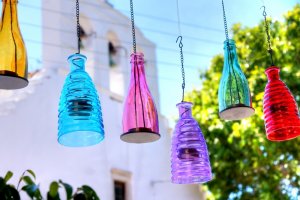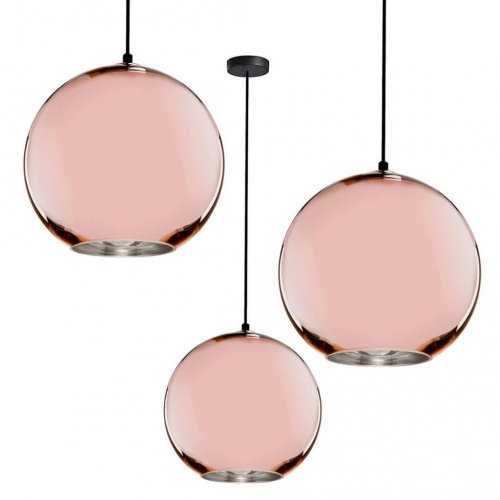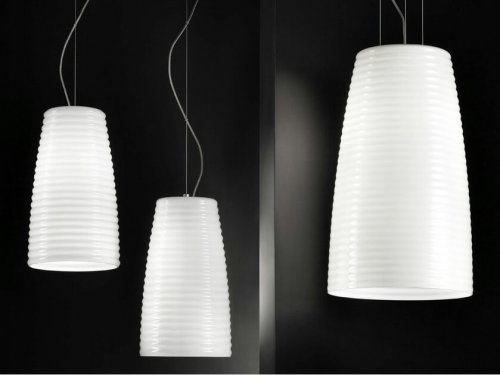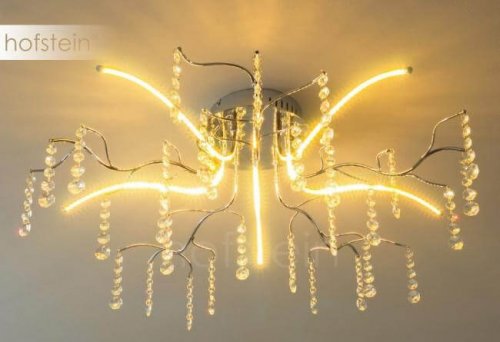Ceiling Light Glass Fixtures - Five Designs

When you think of ceiling light glass fixtures you most likely think of an elaborate chandelier. However, there are many more designs you can choose from these days.
Glass ceiling lamps are an excellent option to illuminate spaces and add a touch of brightness and sophistication to your environment. Of course, it’s mainly because this is a great material for light to travel through.
Just because the common element in all of these designs is glass it doesn’t mean they all have the same style. Don’t forget that there are various techniques for making glass and that the result will be different depending on which one is used. For example, there is colored, enameled, satin, transparent, etc.
Here are some interesting designs that’ll change the way you think about glass ceiling lamps.
Five ceiling light glass fixture designs
1. Ceiling glass light fixtures – Plafon
In this design, there are usually glass panels attached to the ceiling. In general, these types of glass ceiling lamps have a simple and little ornamental structure, kind of like a bowl. And while the bulb may be hidden, there are also models in which this is completely exposed, since the shape is like a hoop.
Likewise, there are those that have four bulbs instead of one. However, their shape and size could vary greatly. For instance, there are square models that are about 12-16 inches and also those that occupy a little over 3 feet.
Consider the ones with cascading glass rhinestones, they’ll be lovely in your living room.
2. Geometric lamps

Geometric ceiling glass lamps are available in designs that range from modern minimalism to ultra-futuristic. There are some that have a spherical-shaped glass shade, plated with a copper tincture.
Unlike the ones above, geometric ceiling lamps are not attached to the ceiling but suspended. Thus, they become more dynamic when on.
If you’re into scutoid shapes, these lamps will help you achieve an ultra-modern atmosphere.
3. Tulip shape

Lamps with glass lampshades are a very elegant option, especially when they have shapes that are different from the ordinary. There are some with a gloss white glass tulip shape and a textured finish. And, these don’t only stand out due to their modern appearance but also for the technique with which the glass was shaped – Venetian glass, for example.
4. Pendants

There are pendant light styles with a completely renewed style that instead of having “arms” curved in a vertical position, have them in a horizontal one instead. As for the glass, there are many styles. The fretwork spheres are a true favorite.
5. Mixed
Mixed glass ceiling lamps are one of the smartest bets these days as they don’t go out of style. These integrate the characteristics of two or more types of light fixtures and are introduced in a highly innovative way in many spaces.
There are some designs that combine certain characteristics of the ceiling light fixture with the pendant style. Ok, but how do they incorporate the crystal? They do so in several short strips of beads, for example.
Ceiling glass light fixtures – final notes
You should definitely research the various reinterpretations of ceiling lamps before selecting a specific design.
The light will project in one way or another depending on the technique used to shape the glass and, obviously, on the design of the lamp. It will have a greater or lesser intensity. This is something you should keep in mind when choosing a design for your home.
For example, if the lamp material is opaque and it’s also a glass dome or sphere and projects a very dim light, then add other light sources. This is mainly so that your space is not too gloomy.
When you think of ceiling light glass fixtures you most likely think of an elaborate chandelier. However, there are many more designs you can choose from these days.
Glass ceiling lamps are an excellent option to illuminate spaces and add a touch of brightness and sophistication to your environment. Of course, it’s mainly because this is a great material for light to travel through.
Just because the common element in all of these designs is glass it doesn’t mean they all have the same style. Don’t forget that there are various techniques for making glass and that the result will be different depending on which one is used. For example, there is colored, enameled, satin, transparent, etc.
Here are some interesting designs that’ll change the way you think about glass ceiling lamps.
Five ceiling light glass fixture designs
1. Ceiling glass light fixtures – Plafon
In this design, there are usually glass panels attached to the ceiling. In general, these types of glass ceiling lamps have a simple and little ornamental structure, kind of like a bowl. And while the bulb may be hidden, there are also models in which this is completely exposed, since the shape is like a hoop.
Likewise, there are those that have four bulbs instead of one. However, their shape and size could vary greatly. For instance, there are square models that are about 12-16 inches and also those that occupy a little over 3 feet.
Consider the ones with cascading glass rhinestones, they’ll be lovely in your living room.
2. Geometric lamps

Geometric ceiling glass lamps are available in designs that range from modern minimalism to ultra-futuristic. There are some that have a spherical-shaped glass shade, plated with a copper tincture.
Unlike the ones above, geometric ceiling lamps are not attached to the ceiling but suspended. Thus, they become more dynamic when on.
If you’re into scutoid shapes, these lamps will help you achieve an ultra-modern atmosphere.
3. Tulip shape

Lamps with glass lampshades are a very elegant option, especially when they have shapes that are different from the ordinary. There are some with a gloss white glass tulip shape and a textured finish. And, these don’t only stand out due to their modern appearance but also for the technique with which the glass was shaped – Venetian glass, for example.
4. Pendants

There are pendant light styles with a completely renewed style that instead of having “arms” curved in a vertical position, have them in a horizontal one instead. As for the glass, there are many styles. The fretwork spheres are a true favorite.
5. Mixed
Mixed glass ceiling lamps are one of the smartest bets these days as they don’t go out of style. These integrate the characteristics of two or more types of light fixtures and are introduced in a highly innovative way in many spaces.
There are some designs that combine certain characteristics of the ceiling light fixture with the pendant style. Ok, but how do they incorporate the crystal? They do so in several short strips of beads, for example.
Ceiling glass light fixtures – final notes
You should definitely research the various reinterpretations of ceiling lamps before selecting a specific design.
The light will project in one way or another depending on the technique used to shape the glass and, obviously, on the design of the lamp. It will have a greater or lesser intensity. This is something you should keep in mind when choosing a design for your home.
For example, if the lamp material is opaque and it’s also a glass dome or sphere and projects a very dim light, then add other light sources. This is mainly so that your space is not too gloomy.







